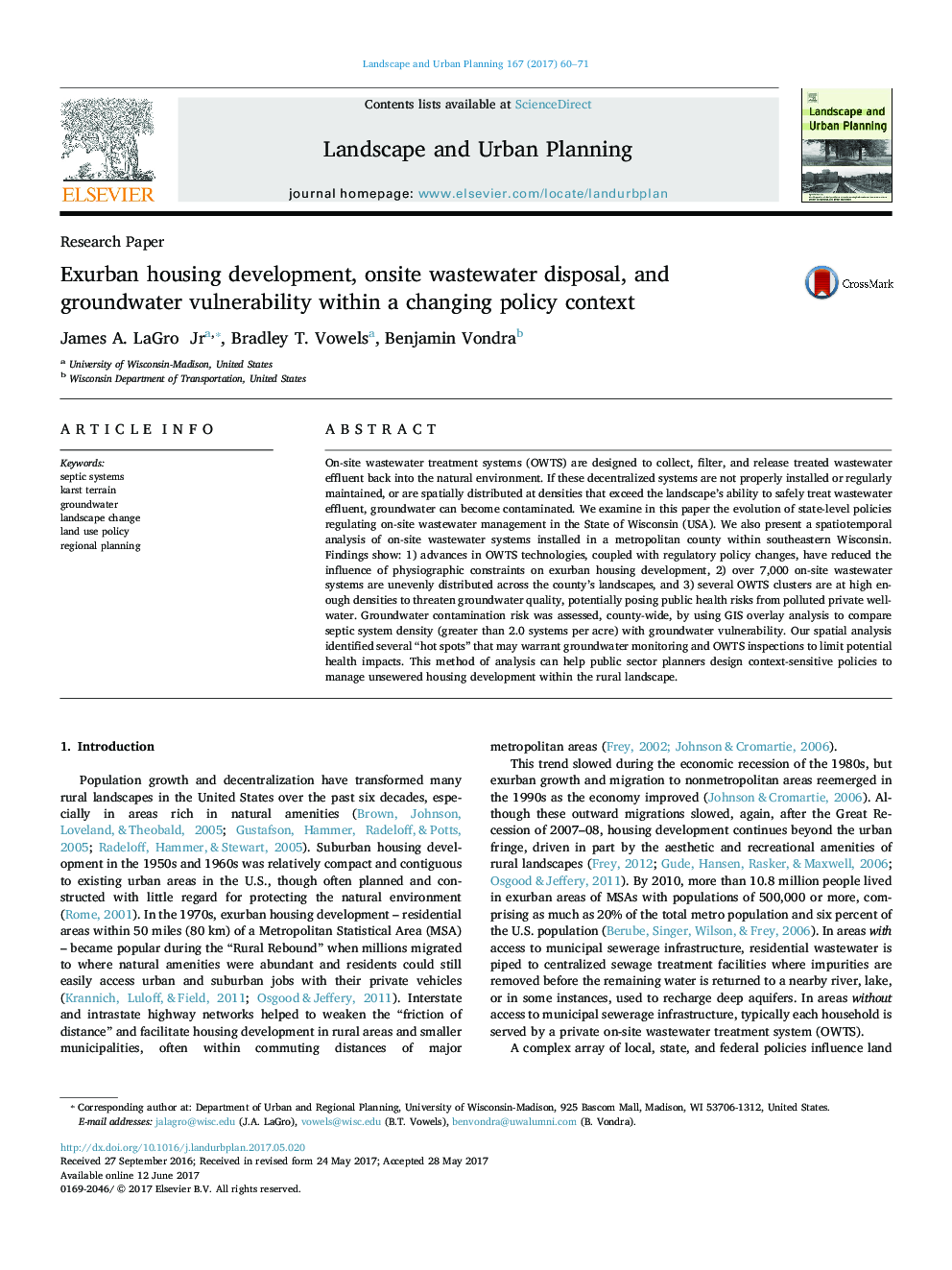| Article ID | Journal | Published Year | Pages | File Type |
|---|---|---|---|---|
| 5114938 | Landscape and Urban Planning | 2017 | 12 Pages |
Abstract
On-site wastewater treatment systems (OWTS) are designed to collect, filter, and release treated wastewater effluent back into the natural environment. If these decentralized systems are not properly installed or regularly maintained, or are spatially distributed at densities that exceed the landscape's ability to safely treat wastewater effluent, groundwater can become contaminated. We examine in this paper the evolution of state-level policies regulating on-site wastewater management in the State of Wisconsin (USA). We also present a spatiotemporal analysis of on-site wastewater systems installed in a metropolitan county within southeastern Wisconsin. Findings show: 1) advances in OWTS technologies, coupled with regulatory policy changes, have reduced the influence of physiographic constraints on exurban housing development, 2) over 7,000 on-site wastewater systems are unevenly distributed across the county's landscapes, and 3) several OWTS clusters are at high enough densities to threaten groundwater quality, potentially posing public health risks from polluted private well-water. Groundwater contamination risk was assessed, county-wide, by using GIS overlay analysis to compare septic system density (greater than 2.0 systems per acre) with groundwater vulnerability. Our spatial analysis identified several “hot spots” that may warrant groundwater monitoring and OWTS inspections to limit potential health impacts. This method of analysis can help public sector planners design context-sensitive policies to manage unsewered housing development within the rural landscape.
Related Topics
Life Sciences
Agricultural and Biological Sciences
Ecology, Evolution, Behavior and Systematics
Authors
James A. Jr, Bradley T. Vowels, Benjamin Vondra,
